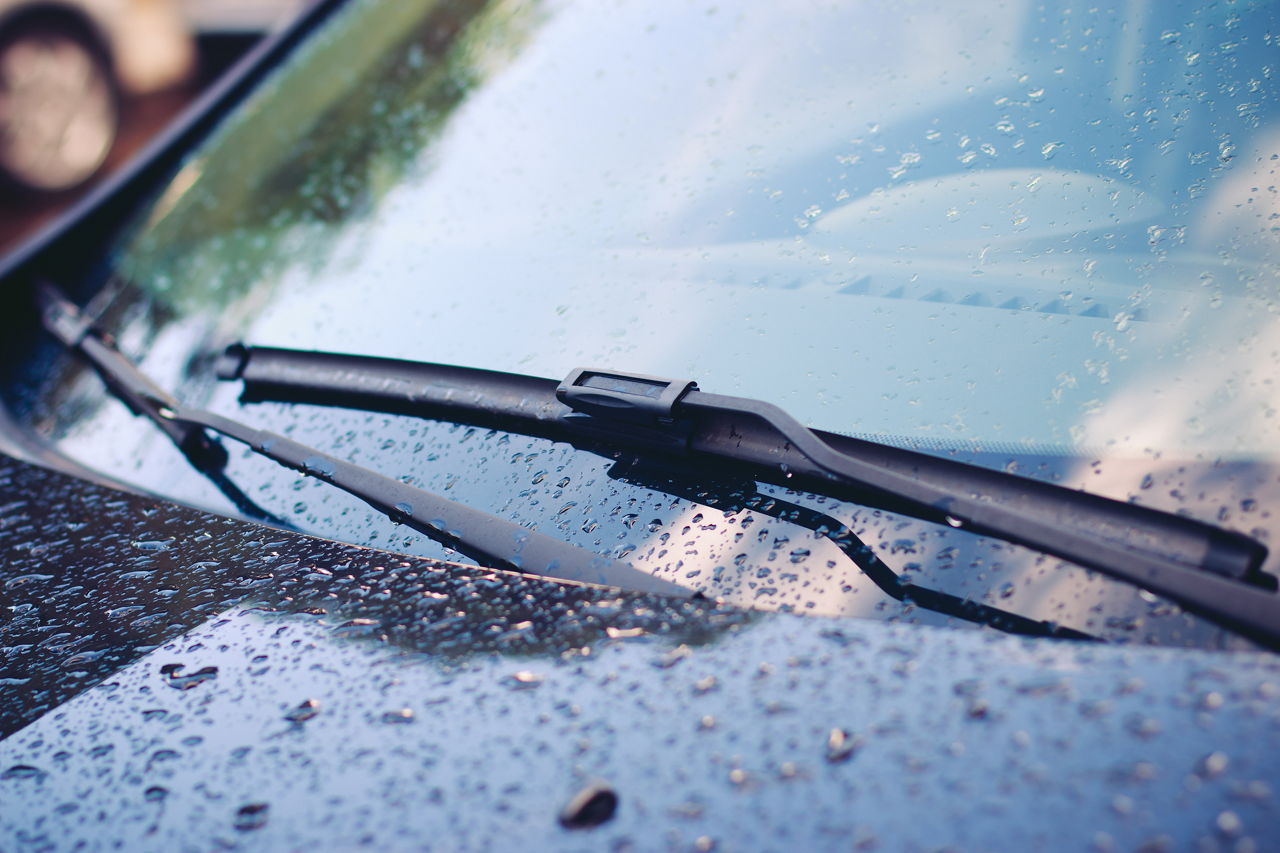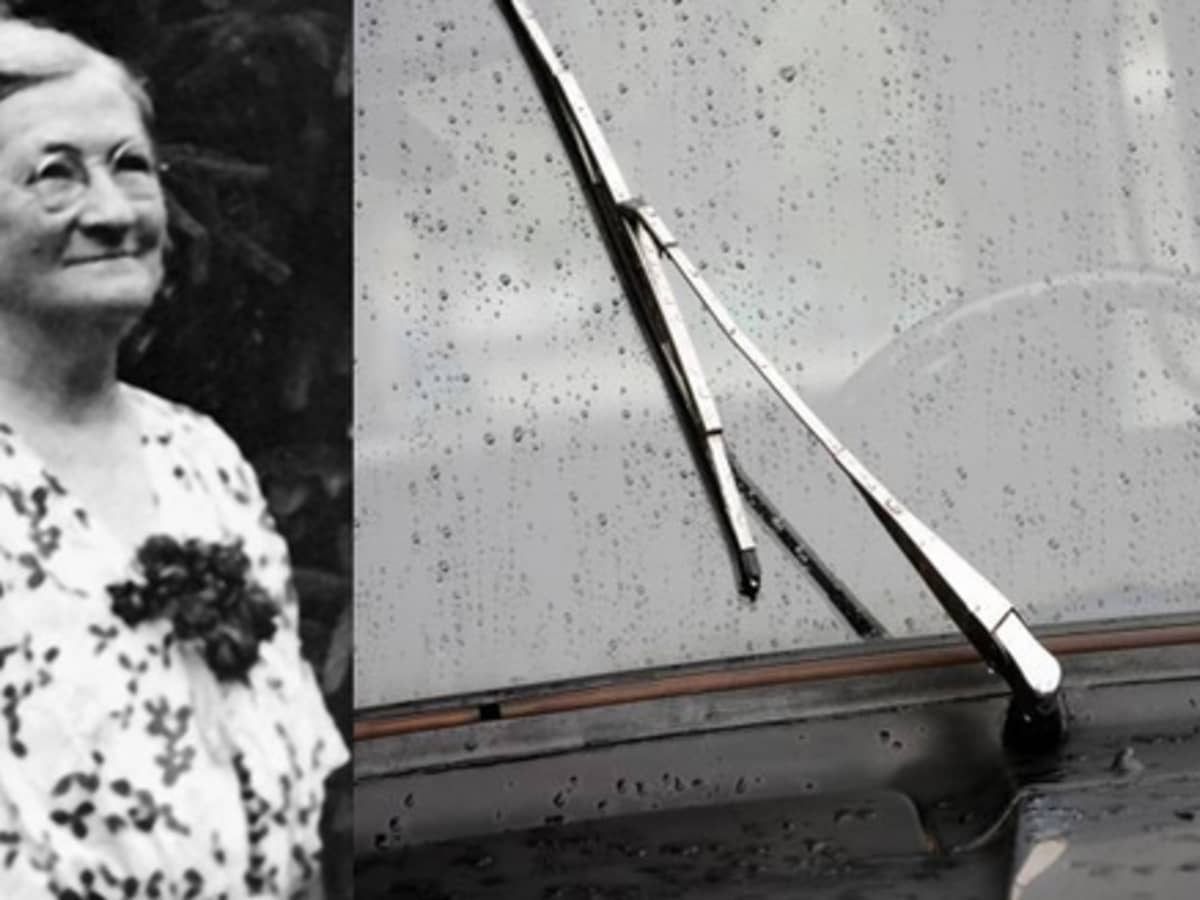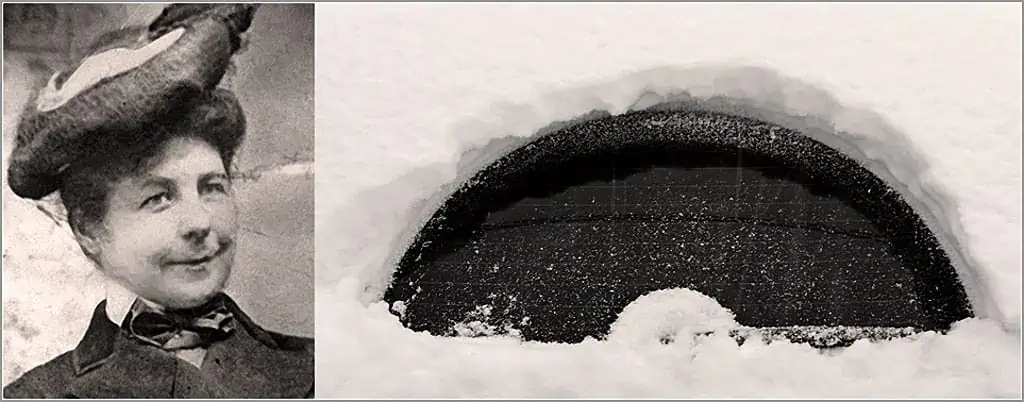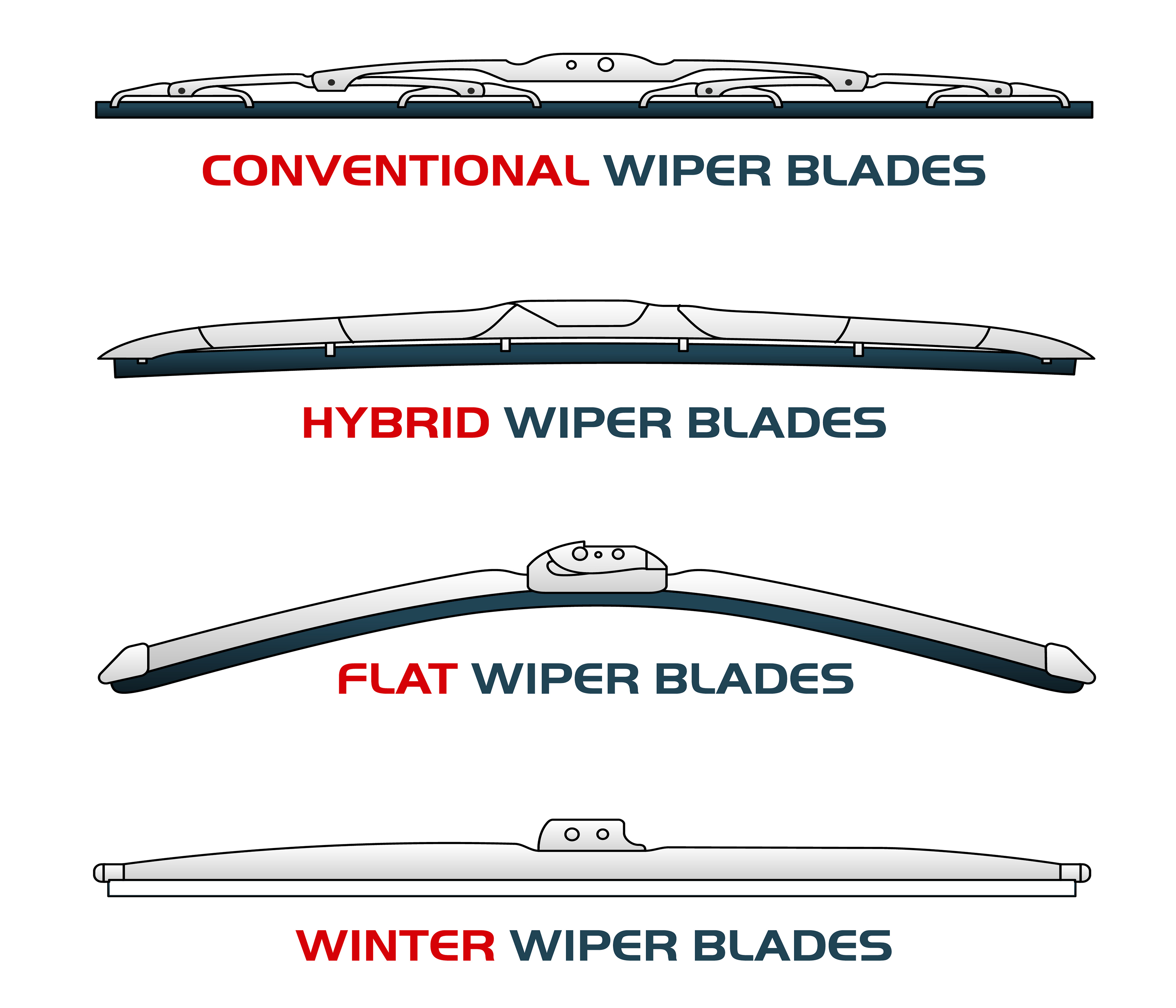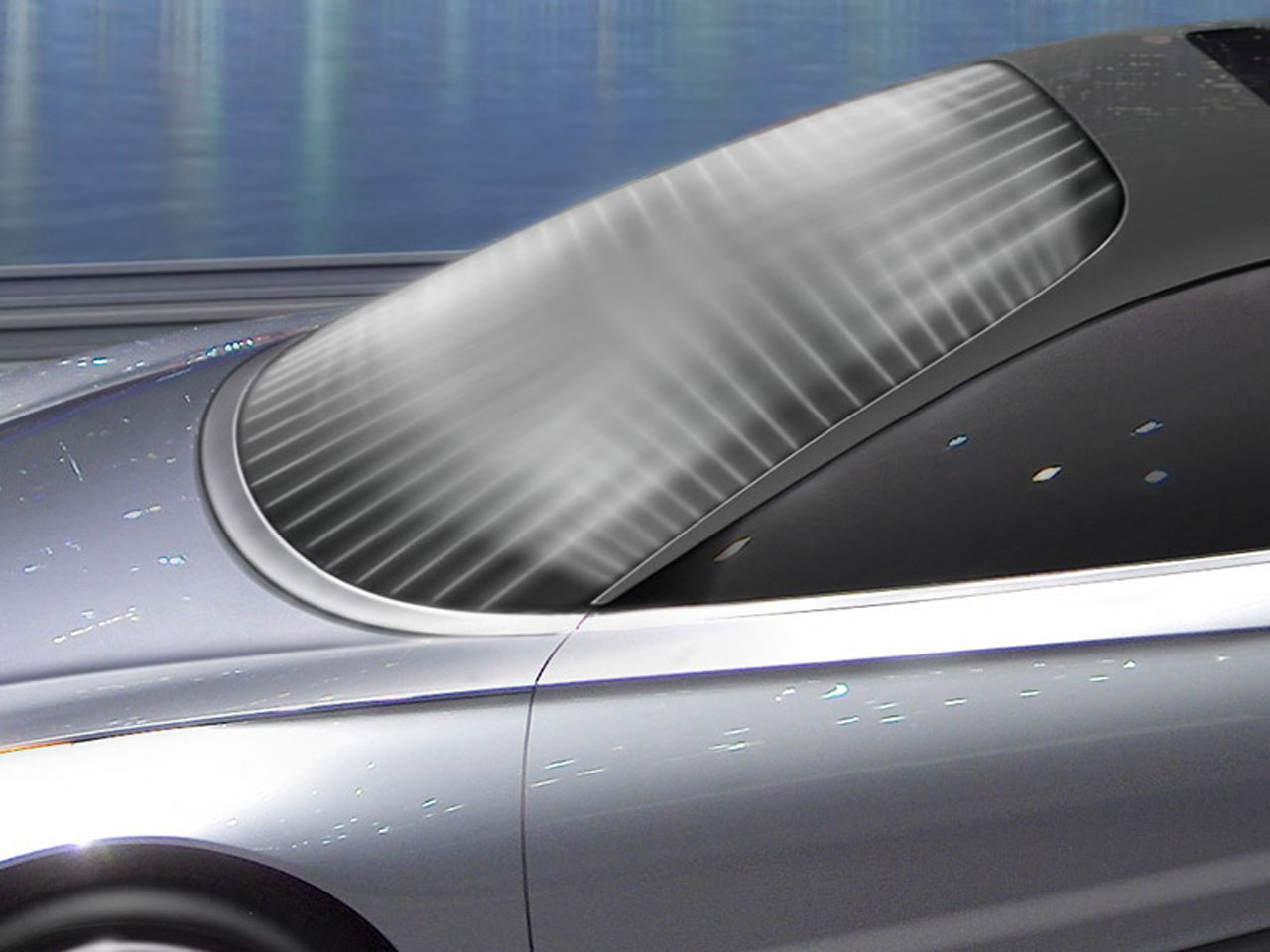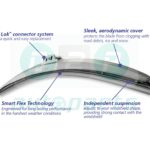In the world of automotive safety, the humble windshield wiper has played a pivotal role in ensuring clear visibility for drivers through rain, snow, and debris. This essential component, often overlooked, has a rich history and a fascinating evolution that started with Mary Anderson’s groundbreaking invention. In this article, we will delve into the origins, innovations, and modern advancements in windshield wiper technology, shedding light on its remarkable journey and the inventors who transformed driving safety with their ingenious ideas.
Importance of windshield wipers in automotive safety
Windshield wipers play a crucial role in maintaining automotive safety by providing clear visibility for drivers during inclement weather conditions such as rain, snow, sleet, and even dust storms. Adequate visibility is a key factor in avoiding accidents, as it allows drivers to react promptly to any potential hazards on the road. According to a study by the US Federal Highway Administration, approximately 22% of all vehicle crashes are weather-related, with the majority of those occurring during rainfall. This highlights the importance of windshield wipers in reducing the risk of accidents by ensuring that drivers have an unobstructed view of their surroundings.
The effectiveness of windshield wipers in enhancing driving safety can also be supported by data from the National Highway Traffic Safety Administration (NHTSA). They reported that in 2020, there were 4,324 fatal crashes in the United States due to adverse weather conditions, with rain being a significant contributor. With the constant development and improvement of windshield wiper technology, the industry aims to further minimize the number of weather-related accidents. Innovations such as rain-sensing wipers, advanced blade materials, and even wiperless windshield systems are now being integrated into modern vehicles, providing drivers with better visibility and reaction times. By emphasizing the importance of regular wiper maintenance and adopting advanced technologies, we can collectively work towards enhancing road safety and reducing the incidence of weather-related accidents.
Brief overview of the invention and its evolution
The invention of the windshield wiper dates back to the early 20th century, when Mary Anderson, an American real estate developer, came up with the idea during a visit to New York City in 1903. She noticed that streetcar drivers were struggling to maintain visibility in rainy weather, often resorting to sticking their heads out of the windows or stopping frequently to manually clear the windshield. This observation inspired Anderson to develop a device that would help improve visibility without the need for the driver to leave their seat.
Anderson’s windshield wiper was a simple yet effective design, consisting of a lever inside the vehicle that controlled a rubber blade on the outside. The lever allowed the driver to move the blade back and forth across the windshield, clearing away rainwater and debris. In 1903, she was granted a patent for her “window cleaning device,” making her the first person to invent a windshield wiper. However, her invention was initially met with skepticism and did not gain immediate popularity.
Over the years, the windshield wiper has evolved significantly. In the 1920s, the Tri-Continental Corporation introduced the first automatic wiper, which used a vacuum-powered system. Later, electric wipers were developed by Trico Products Corporation, paving the way for further innovations. The introduction of intermittent and variable-speed wipers by Robert Kearns in the 1960s transformed the industry and laid the foundation for modern wiper systems. Today, windshield wipers incorporate advanced materials, rain-sensing technology, and even wiperless systems, showcasing the remarkable progress since Anderson’s original invention.
Early History: Before Wipers and Mary Anderson’s Groundbreaking Invention
Pre-windshield wiper solutions
Before the advent of windshield wipers, drivers employed various makeshift methods to clear their windshields in inclement weather. One popular solution was the use of slaters or squeegees, which required drivers to manually wipe the windshield, often by leaning out of the vehicle’s window. Another early attempt at improving visibility was the incorporation of hand-operated wipers, wherein a handle inside the vehicle was connected to a wiper blade on the outside, allowing the driver to manually move the blade across the windshield. However, these pre-windshield wiper solutions were inconvenient, inefficient, and posed a significant safety risk, as drivers had to divert their attention from the road to clear their windshields, highlighting the need for a more effective and automated solution.
1. Slaters or squeegees
Slaters or squeegees were rudimentary devices used by drivers to clear their windshields before the invention of modern windshield wipers. They consisted of a flat, elongated piece of rubber or soft material attached to a handle, similar to a window cleaner’s squeegee. To use the slater, drivers would manually wipe the windshield by moving the device back and forth across the glass surface to remove rain, snow, or debris. This process often involved the driver leaning out of the vehicle’s window, posing a significant safety hazard as it required them to take their eyes off the road and their hands off the steering wheel. Despite its drawbacks, the slater served as a precursor to the windshield wiper, highlighting the need for a more efficient and automated solution to ensure clear visibility and improved driving safety.
2. Hand-operated wipers
Hand-operated wipers were an early attempt at improving visibility for drivers during adverse weather conditions. They featured a wiper blade mounted on the exterior of the windshield, connected to a handle or lever situated inside the vehicle. To operate the wiper, the driver would manually move the handle back and forth, causing the wiper blade to sweep across the windshield and clear away rain, snow, or debris. While this system offered a slight improvement over slaters or squeegees, it still required the driver to divert their attention from the road and use one hand to operate the wiper. The hand-operated wiper system, though an important step in the evolution of windshield wipers, was not an ideal solution, ultimately paving the way for the development of more efficient, automatic wipers that would enhance driving safety and convenience.
Mary Anderson’s pioneering invention
1. The motivation behind her idea
The motivation behind Mary Anderson’s pioneering invention of the windshield wiper stemmed from her keen observation of a widespread problem faced by drivers during the early 20th century. In 1903, during a visit to New York City, Anderson noticed that streetcar drivers struggled to maintain visibility in the rain, often resorting to sticking their heads out of the windows or stopping frequently to manually clean the windshield. Recognizing the inconvenience and safety hazards that these practices presented, Anderson was inspired to create a device that would effectively clear the windshield without requiring the driver to leave their seat or take their eyes off the road. This led to her development of the first windshield wiper, a groundbreaking invention that would significantly improve driving safety and convenience in inclement weather conditions.
2. The design and patent of her windshield wiper
Mary Anderson’s windshield wiper design was a simple yet innovative solution to the visibility challenges faced by drivers. Her device featured a rubber blade attached to an arm that was connected to a lever inside the vehicle. The lever could be operated by the driver, causing the rubber blade to move back and forth across the windshield, effectively clearing away rainwater and debris. In November 1903, Anderson was granted US Patent No. 743,801 for her “window cleaning device,” making her the first person to develop and patent a windshield wiper. Her invention laid the foundation for future advancements in windshield wiper technology, setting the stage for the evolution of more sophisticated and efficient systems that would become standard equipment in automobiles.
3. The initial reception and adoption of her invention
Despite the practicality and potential of Mary Anderson’s windshield wiper invention, the initial reception was met with skepticism and reluctance. At the time, many people regarded the device as unnecessary or even distracting for drivers. Anderson attempted to sell her invention to a prominent Canadian manufacturing firm, but they dismissed her idea as lacking commercial value, claiming that it would have no practical application.
However, as automobiles became more popular and their speeds increased, the demand for better visibility solutions grew. By 1913, windshield wipers had started to gain traction and were being installed in a number of vehicles, including the iconic Ford Model T. In 1916, windshield wipers became standard equipment on most new automobiles, proving the value and foresight of Anderson’s invention.
Although Mary Anderson never profited from her windshield wiper invention, her idea undeniably revolutionized automotive safety and paved the way for future innovations. Today, her pioneering spirit is recognized and celebrated as her invention continues to play a vital role in ensuring clear visibility and safe driving in vehicles worldwide.
Evolution of Wipers: From Vacuum-Powered to Electric Systems
The evolution of windshield wipers progressed from vacuum-powered to electric systems, offering significant improvements in efficiency and convenience. The Tri-Continental Corporation developed the first automatic wiper using a vacuum-powered system in the 1920s. Later, Trico Products Corporation introduced electric windshield wipers, which laid the foundation for modern wiper technology and further advanced the capabilities of these essential automotive safety features.
Robert Douglass and the Tri-Continental Corporation
1. Development of the first automatic windshield wiper
Robert Douglass, an American inventor and engineer, played a significant role in the development of the first automatic windshield wiper in collaboration with the Tri-Continental Corporation. In the early 1920s, Douglass designed a vacuum-powered wiper system called the “Douglass Storm Windshield Cleaner.” Unlike earlier manual wipers, the vacuum-powered system harnessed the engine’s vacuum to drive a motor, which in turn moved the wiper blades back and forth across the windshield without any manual intervention from the driver.
The Douglass Storm Windshield Cleaner offered a considerable improvement in driving safety and convenience compared to hand-operated wipers. The automatic system allowed drivers to focus on the road without needing to operate the wipers manually. This innovation marked an important milestone in the evolution of windshield wiper technology, paving the way for the development of more advanced and efficient wiper systems in the years to come.
2. Introduction of the vacuum-powered wiper system
The introduction of the vacuum-powered wiper system by the Tri-Continental Corporation in the early 1920s was a turning point in the evolution of windshield wipers. The system, which used the engine’s vacuum to power a small motor that moved the wiper blades automatically, brought significant benefits in terms of safety and convenience for drivers. The vacuum-powered wipers quickly gained popularity and became standard equipment on many automobiles during the 1920s and 1930s.
Though specific data on the adoption of vacuum-powered wipers is scarce, their widespread use is evidenced by the fact that they were equipped on popular vehicles of the time, such as the Ford Model A. However, vacuum-powered wipers had certain limitations, as their performance could be affected by the engine’s speed and load, sometimes causing the wipers to slow down or stop when more engine power was needed for acceleration or hill climbing. This drawback eventually led to the development of more reliable electric wiper systems in the later years, further advancing the capabilities and efficiency of windshield wipers in the automotive industry.
Trico Products Corporation
1. Innovations in wiper blade designs
Trico Products Corporation, an American manufacturer of windshield wiper systems, has been instrumental in driving innovations in wiper blade designs since its inception in the early 20th century. Among their significant contributions is the development of more efficient and reliable wiper blade designs, such as the parallel linkage system, which provided consistent and even pressure across the entire length of the blade. This innovation ensured better contact with the windshield, leading to improved cleaning performance and durability. Trico’s commitment to innovation and advancements in wiper blade technology has played a crucial role in shaping the modern windshield wiper industry and enhancing overall driving safety.
2. Introduction of electric windshield wipers
The introduction of electric windshield wipers by Trico Products Corporation marked a significant advancement in wiper technology, offering several advantages over the older vacuum-powered systems:
Pros:
- Consistent Performance: Electric wipers provided more consistent and reliable performance, as they were not affected by fluctuations in the engine’s vacuum. This ensured a steady wiping speed regardless of the engine load or speed.
- Improved Speed Control: Electric wiper systems allowed for greater control over the wiping speed, enabling drivers to adjust the speed according to the intensity of the precipitation and their visibility needs.
- Reduced Maintenance: Electric wipers generally required less maintenance than vacuum-powered systems, as they had fewer mechanical components that could wear out or fail over time.
Cons:
- Increased Electrical Load: Electric wipers added to the vehicle’s electrical load, which could be a concern for early automobiles with limited electrical capacity. This issue, however, became less significant as automotive electrical systems evolved and improved over time.
- Cost: Electric wipers were initially more expensive than vacuum-powered systems, which could have been a factor in their slower adoption. However, as their benefits became more evident, the cost difference became less significant, and electric wipers eventually became the standard for the industry.
Overall, the introduction of electric windshield wipers brought substantial improvements in performance, reliability, and convenience, making them a superior solution compared to older vacuum-powered systems.
Development of intermittent and variable-speed wipers
1. The role of Robert Kearns in their invention
Robert Kearns, an American engineer and inventor, played a pivotal role in the development of intermittent and variable-speed windshield wipers. In the early 1960s, Kearns conceived the idea for an electronic wiper system that could operate at different speeds and intervals, offering a more versatile and efficient solution for drivers in various weather conditions. Inspired by the blinking mechanism of the human eye, Kearns designed a wiper system that used an electronic circuit to control the wiping speed and pause time between wipes, allowing drivers to customize the wiper operation based on their visibility needs. This groundbreaking invention revolutionized the windshield wiper industry and set the stage for the introduction of even more advanced wiper systems in the years to come.
2. The legal battles surrounding the patent
The development of intermittent and variable-speed windshield wipers by Robert Kearns was not without controversy, as it led to a series of high-profile legal battles surrounding the patent. Kearns filed a patent for his invention in 1964, but major automobile manufacturers, such as Ford and Chrysler, began using intermittent wiper systems without licensing the technology from Kearns. Feeling that his intellectual property rights had been violated, Kearns initiated a series of lawsuits against these companies in the 1970s and 1980s. After years of litigation, Kearns emerged victorious in several cases, securing substantial financial settlements from Ford in 1990 and Chrysler in 1995. These legal battles highlighted the importance of protecting inventors’ rights and respecting their contributions to the advancement of technology and innovation.
Modern Innovations: Advanced Materials and Rain-Sensing Technology

Modern innovations in windshield wiper technology have introduced advanced materials and rain-sensing systems that offer several benefits to drivers:
Pros:
- Improved Performance: Advanced wiper blade materials, such as silicone and dual-rubber compounds, offer better cleaning performance, ensuring optimal contact with the windshield and providing a streak-free wipe.
- Enhanced Durability: The use of advanced materials in wiper blades increases their lifespan and reduces wear, resulting in less frequent replacements and lower maintenance costs for vehicle owners.
- Automated Operation: Rain-sensing technology automatically adjusts the wiper speed based on the intensity of the precipitation, improving visibility and allowing drivers to focus on the road without needing to manually change wiper settings.
Cons:
- Higher Costs: Wiper blades made from advanced materials and systems with rain-sensing technology tend to be more expensive than traditional wipers, potentially increasing the cost of ownership for some vehicle owners.
- Compatibility: Not all vehicles are compatible with advanced wiper blade materials or rain-sensing technology, which may limit their adoption for older or less-equipped vehicles.
- Complexity: Rain-sensing systems can sometimes be overly sensitive or less accurate in certain conditions, resulting in less-than-optimal wiper performance.
In summary, modern innovations in windshield wiper technology, such as advanced materials and rain-sensing systems, offer improved performance, enhanced durability, and automated operation. However, these innovations come with higher costs, compatibility limitations, and increased complexity, which should be considered when evaluating their overall value and effectiveness for various vehicles and driving situations.
Advanced wiper blade materials
1. Silicone and dual-material blades
Advanced windshield wiper blade materials, such as silicone and dual-rubber compounds, have significantly improved the cleaning performance and durability of wipers in recent years. Silicone wiper blades offer superior wiping performance due to their hydrophobic properties, which repel water and prevent the accumulation of dirt and debris. Additionally, silicone blades tend to last longer than traditional rubber blades, making them a more cost-effective option in the long run. Dual-rubber wiper blades combine the benefits of two different materials, typically synthetic rubber and silicone, to provide superior wiping performance and durability. The use of advanced wiper blade materials has helped to reduce streaking and smearing, enhance visibility, and increase overall driving safety in various weather conditions.
2. Benefits and drawbacks of different materials
There are various materials used in windshield wiper blades, each with its own benefits and drawbacks:
- Rubber: Rubber is a common material used in wiper blades due to its affordability and availability. However, traditional rubber blades tend to wear out quickly and may not provide optimal cleaning performance in extreme weather conditions.
- Silicone: Silicone blades offer superior cleaning performance and durability, making them a popular choice among drivers. They are hydrophobic, repelling water and preventing the accumulation of dirt and debris. However, silicone blades tend to be more expensive than traditional rubber blades.
- Dual-Rubber: Dual-rubber wiper blades combine the benefits of different materials, typically synthetic rubber and silicone, to provide superior wiping performance and durability. They tend to be more expensive than traditional rubber blades but offer better cleaning performance and durability.
- Teflon: Teflon-coated wiper blades provide a smooth and streak-free wipe, making them ideal for harsh weather conditions. However, they tend to be more expensive than other types of wiper blades.
- Graphite: Graphite-coated wiper blades offer similar benefits to Teflon blades, providing a smooth and streak-free wipe. They tend to be more affordable than Teflon blades but may not last as long.
Rain-sensing windshield wipers
1. The technology behind rain-sensing systems
Rain-sensing windshield wiper systems use advanced sensors and algorithms to automatically detect rain or moisture on the windshield and adjust the wiper speed accordingly. The sensors, typically located in the wiper mount or windshield, detect the amount and intensity of moisture on the glass, transmitting this information to the wiper control module. The module then activates the wipers, adjusting their speed and frequency based on the level of precipitation detected by the sensors. This automated system allows drivers to focus on the road without needing to manually adjust the wiper settings, improving overall safety and convenience. Rain-sensing systems are becoming increasingly popular in modern vehicles, providing drivers with a more efficient and reliable solution for maintaining clear visibility during adverse weather conditions.
2. Integration with advanced driver assistance systems (ADAS)
Rain-sensing windshield wiper systems have also been integrated with advanced driver assistance systems (ADAS), further enhancing the safety and convenience of driving in adverse weather conditions. Many modern vehicles equipped with ADAS, such as automatic emergency braking and lane departure warning systems, use the same sensors and algorithms as rain-sensing wiper systems to detect and respond to changes in the driving environment. This integration allows for more seamless and efficient operation of these safety features, improving overall driving safety and reducing the risk of accidents caused by reduced visibility in rainy or snowy conditions. Additionally, the integration of rain-sensing wiper systems with ADAS enables more advanced safety features, such as automatic collision avoidance systems that can detect and respond to sudden changes in weather conditions.
Wiperless windshield systems
1. Nanotechnology and hydrophobic coatings
Wiperless windshield systems use advanced nanotechnology and hydrophobic coatings to repel water and prevent it from sticking to the windshield. These coatings create a surface that is extremely slippery and repels water, causing it to bead up and roll off the glass without leaving any streaks or residue. This technology allows for a clear and unobstructed view of the road in all weather conditions, without the need for traditional windshield wipers. Wiperless systems have the added benefit of reducing drag and wind resistance, which can improve fuel efficiency and reduce noise. However, wiperless systems are still in the early stages of development, and their effectiveness in heavy rain or snow has yet to be fully tested and evaluated. Additionally, the cost of applying these coatings to vehicles may be higher than the cost of traditional wiper blades.
2. Ultrasonic windscreen clearing technology
Ultrasonic windscreen clearing technology is a new and innovative approach to windshield wiper systems that uses high-frequency sound waves to clear water and debris from the windshield. The technology consists of small transducers mounted on the windshield that emit high-frequency sound waves that are directed across the glass. These waves create a vibration that loosens dirt and water droplets, causing them to be repelled from the windshield without leaving any streaks or residue. Ultrasonic clearing systems offer several benefits, including a reduction in drag and wind noise, improved visibility, and reduced wear and tear on traditional wiper blades. However, the technology is still in the early stages of development, and its effectiveness in heavy rain or snow has yet to be fully tested and evaluated. Additionally, the cost of installing ultrasonic transducers on vehicles may be higher than the cost of traditional windshield wiper systems.
Safety Implications: The Impact of Windshield Wipers on Accident Reduction
Reduction in accidents due to improved visibility
Windshield wipers have had a significant impact on reducing accidents by improving driver visibility during adverse weather conditions. Rain, snow, and other precipitation can significantly reduce visibility, making it difficult for drivers to see the road ahead and react quickly to potential hazards. Windshield wipers help to maintain clear visibility by removing raindrops, snowflakes, and debris from the windshield, ensuring that drivers can see the road ahead and react in a timely manner to potential hazards. According to a study by the National Highway Traffic Safety Administration, wet weather accounted for 22% of all vehicle crashes in the United States, highlighting the importance of maintaining clear visibility during adverse weather conditions. Windshield wipers have been instrumental in reducing accidents caused by reduced visibility, making them an essential safety feature in modern automobiles.
Importance of regular wiper maintenance
Regular maintenance of windshield wipers is crucial for ensuring optimal performance and safety. Over time, wiper blades can become worn or damaged, reducing their ability to effectively remove water and debris from the windshield. Regular inspection, cleaning, and replacement of wiper blades, as well as maintaining the wiper system’s mechanical components, can help to ensure that the wipers are operating at their best, enhancing visibility and overall driving safety.
Future developments in windshield wiper technology
The future of windshield wiper technology is expected to focus on further enhancing safety and convenience for drivers through the integration of advanced sensors and algorithms. Future developments may include more sophisticated rain-sensing systems that can detect a wider range of precipitation types and intensities, as well as more advanced wiper blade materials and designs that offer even better cleaning performance and durability. The continued integration of windshield wiper systems with ADAS is also likely to play a significant role in improving driving safety by enhancing the capabilities of collision avoidance and other safety features. Additionally, the development of new and innovative approaches, such as ultrasonic clearing systems and wiperless windshield coatings, may provide even more effective solutions for maintaining clear visibility in adverse weather conditions, reducing accidents and enhancing overall driving safety.
Conclusion: Celebrating the Inventors and Enduring Significance of Windshield Wipers
Recap of the history of the windshield wiper
The history of the windshield wiper is a testament to the ingenuity and innovation of inventors who have sought to improve driving safety and convenience. From the early manual wipers of the 1900s to the advanced rain-sensing and ultrasonic systems of today, windshield wipers have undergone significant advancements over the years, improving driver visibility and reducing accidents caused by reduced visibility. Inventors such as Mary Anderson and Robert Kearns played a crucial role in developing the early iterations of windshield wiper technology, while subsequent advancements have been made by companies such as Trico Products and their innovative use of advanced materials and rain-sensing technology. The enduring significance of windshield wipers as a critical safety feature for automobiles is a testament to the enduring impact of innovation and invention in our daily lives.
Acknowledgement of the inventors and their contributions
The development of windshield wiper technology would not have been possible without the contributions of several notable inventors, including:
- Mary Anderson (1903): Inventor of the first manually operated windshield wiper system, which used a lever inside the vehicle to control the wipers.
- Robert Douglass (1922): Developer of the first automatic windshield wiper system, which used a vacuum-powered motor to operate the wipers.
- Robert Kearns (1964): Inventor of the first intermittent and variable-speed windshield wiper system, which allowed for customizable wiper operation based on driving conditions.
These inventors and their contributions have helped to shape the evolution of windshield wiper technology and improve driving safety for millions of people around the world.
The enduring significance of windshield wipers in modern vehicles
Windshield wipers have become an essential safety feature in modern vehicles, helping to maintain clear visibility and reduce accidents caused by reduced visibility during adverse weather conditions. With the continued development and integration of advanced materials, sensors, and algorithms, the future of windshield wiper technology is likely to focus on enhancing driving safety and convenience even further. We can expect to see more sophisticated rain-sensing systems that can detect a wider range of precipitation types and intensities, as well as more advanced wiper blade materials and designs that offer even better cleaning performance and durability. The integration of windshield wiper systems with ADAS is also likely to continue, providing drivers with more efficient and reliable solutions for maintaining clear visibility during adverse weather conditions. As technology continues to advance, we can expect that the enduring significance of windshield wipers in modern vehicles will continue to play a critical role in enhancing driving safety and convenience for years to come.

